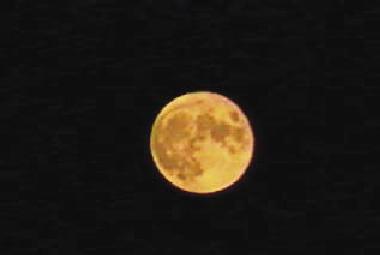Since the dawn of mankind, we have watched the moon and seen imaginary shapes along the lunar surface. Tonight, when the moon rises, this is your chance to capture one of the most elusive formations: the rabbit on the moon
Tammy Plotner and Jeff Barber, Universe Today

The moon rules the night sky and provides an opportunity even for unaided observers to exercise their imagination.
Since the dawn of mankind, we have watched the moon and seen imaginary shapes along the lunar surface. Tonight, when the moon rises, this is your chance to capture one of the most elusive formations: the rabbit on the moon. The "rabbit" is a combination of all the dark areas on the moon. Oceanus Procellarum forms the ear while Mar humorum contributes the "nose". The body is a mare imbrium and the "front leg" is a mare nubium.
Mara Sernitatis is the rear. In addition, the Sea of Serenity and Mara Pesunditalis forms the rear leg, and the Sea of Chrysium the "tail".
Look at the moon with an open mind and new eyes and you will find the "rabbit" pulled out of the hat and up into the sky.
For those with telescopes and binoculars, the surface of the moon provides a clear and good view of the Grimaldi crater. The crater, named after the Italian physicist and astronomer Francisco Grimaldi. A deep and gray crater is one of the dark formations on the moon - it reflects only 6% of the light falling on it.
It is about 430 kilometers long and it is easy to see along the line that separates light and darkness, a little south of the center of the lunar wheel. Tonight it will be easy to see its mountain walls that will then disappear, and Grimaldi will disappear in the light of the full moon.
Before viewing the moon, let's view another double star - Aeta Orionis. Eta is a 3.4 magnitude star about 6 degrees north-northeast of Rigel. Like Elnitak, Ata has a close companion star. Look for the faint star (magnitude 9.4) that may not be part of the system. Like Alnitac almost every telescope can separate the two. But as mentioned, a particularly clean sky is needed to view each star individually clearly.
Project 365
UNIVERSE TODAY website
https://www.hayadan.org.il/BuildaGate4/general2/data_card.php?Cat=~~~396843745~~~261&SiteName=hayadan
